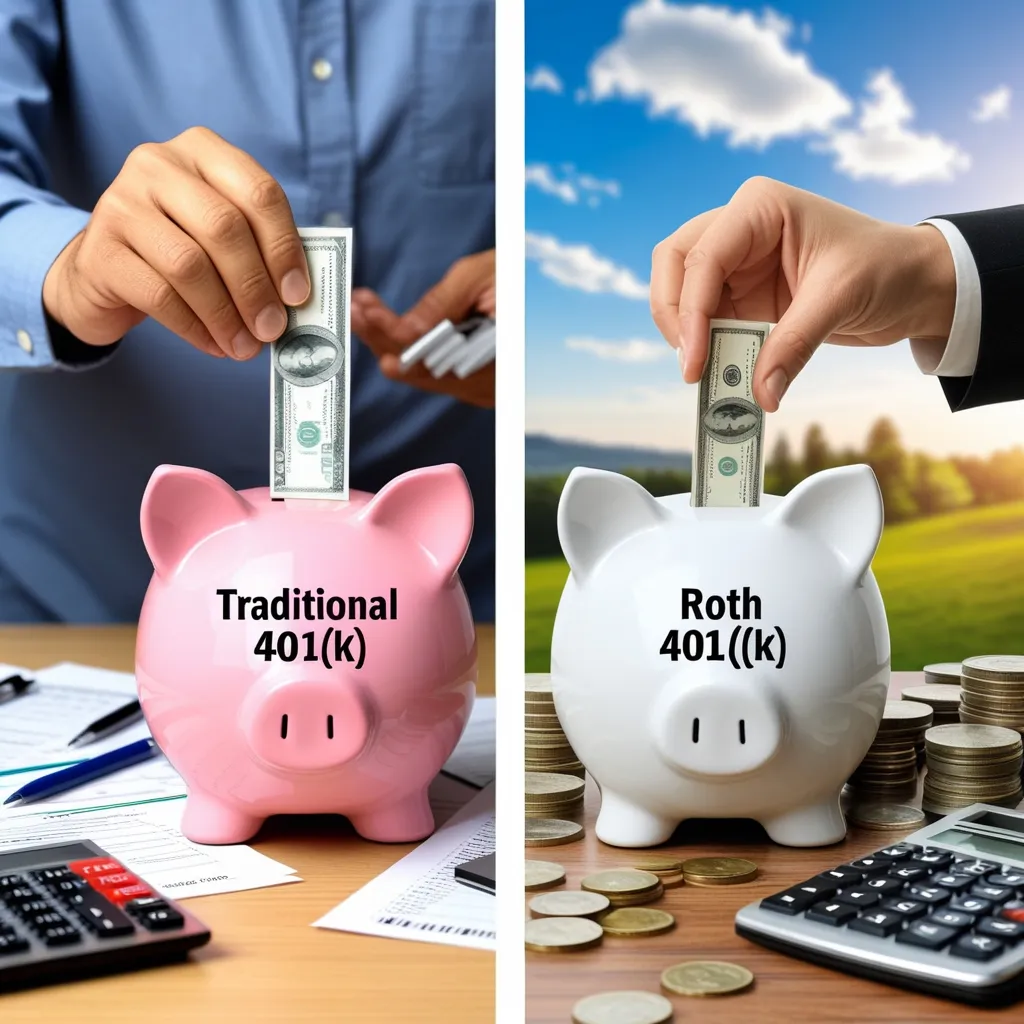When it comes to planning for retirement, one of the most critical choices is picking the right type of 401(k) plan. You’ve got two popular options here: the traditional 401(k) and the Roth 401(k). Each comes with its own perks and downsides, but understanding their differences can help steer your decision.
Both traditional and Roth 401(k) plans are employer-sponsored retirement accounts that share common features like contribution limits and potential employer matches. For instance, in 2024, you can contribute up to $23,000 to either plan, with an additional $7,500 if you’re over 50.
The major player in this game is tax treatment. With a traditional 401(k), you contribute pre-tax dollars, lowering your current taxable income. This means you won’t pay taxes on your contributions until you withdraw them during retirement, where they are taxed as ordinary income.
On the flip side, a Roth 401(k) uses after-tax dollars. You pay taxes on the money before it ever hits your account, but the cool part is that you get to make tax-free withdrawals in retirement. This can be a huge win if you think you’ll land in a higher tax bracket later in life.
The way you contribute to these accounts impacts your paycheck differently. Contributions to a traditional 401(k) get taken out before taxes, which decreases your taxable income and can lead to a higher take-home pay. But if you’re in a low tax bracket now and expect this to go up, paying taxes upfront with a Roth 401(k) might be wiser. You’ll dodge those higher taxes in retirement and enjoy tax-free growth and withdrawals.
When it comes to withdrawals, traditional 401(k) withdrawals are taxed as income and could hit you with a 10% penalty if taken before age 59 ½, unless you meet some IRS exceptions. Roth 401(k) withdrawals are tax-free if they meet the requirements—being held for at least five years and taken after age 59 ½, or due to disability or death.
Both traditional and Roth 401(k) plans generally demand required minimum distributions (RMDs) when you hit certain age thresholds, usually around 72. But thanks to the Secure Act 2.0, starting in 2024, Roth 401(k) accounts will no longer require RMDs during the owner’s lifetime. This allows your assets to keep growing tax-free and can be a fantastic advantage if you plan to pass these assets on.
Employer matching contributions also play a role. For traditional 401(k) plans, employer matches are made pre-tax and are taxed upon withdrawal. For Roth 401(k) plans, employer matches also go into a pre-tax account, meaning you’ll pay taxes on them when you eventually withdraw.
Deciding between a traditional and a Roth 401(k) really boils down to your current and future tax situation. If you’re young and in a low tax bracket, contributing to a Roth 401(k) might be a smart move. You’re paying taxes now at a lower rate and get to enjoy tax-free growth and withdrawals later. Conversely, if you’re currently in a high tax bracket and think you’ll be in a lower one come retirement, a traditional 401(k) could be your best bet. This way, you reduce your current taxable income and pay taxes later when your tax rate might be lower.
Some experts even suggest splitting the difference by contributing to both types of accounts. This way, you spread out your tax risk, giving you a buffer against unpredictable tax rates in the future. You can contribute to both a traditional and a Roth 401(k) in the same year, just as long as you don’t go over the annual limit.
When deciding, also consider your entire financial outlook and plans. If you’re unsure which plan suits you best, you might start with a traditional 401(k) to lower your current taxable income and then switch to a Roth 401(k) as your income and tax bracket change.
For example, if you’re 22 and kicking off your career with a $50,000 salary, a Roth 401(k) might be attractive since you’re currently in a lower tax bracket and expect to earn more down the line. Conversely, if you’re already earning a higher salary, a traditional 401(k) might offer more immediate benefit by reducing your current taxable income.
The choice between a traditional 401(k) and a Roth 401(k) is a deeply personal one, influenced by your current and future tax situation and financial goals. Both plans pack valuable benefits, and understanding their differences in tax treatments, contribution rules, and withdrawal regulations can help you make the best decision for your retirement savings plan.
By evaluating your tax bracket now and what you anticipate it will be in the future, you can decide whether to handle taxes upfront with a Roth 401(k) or defer them until retirement with a traditional 401(k). Either way, contributing to a 401(k) plan is a top move to secure your financial future.






